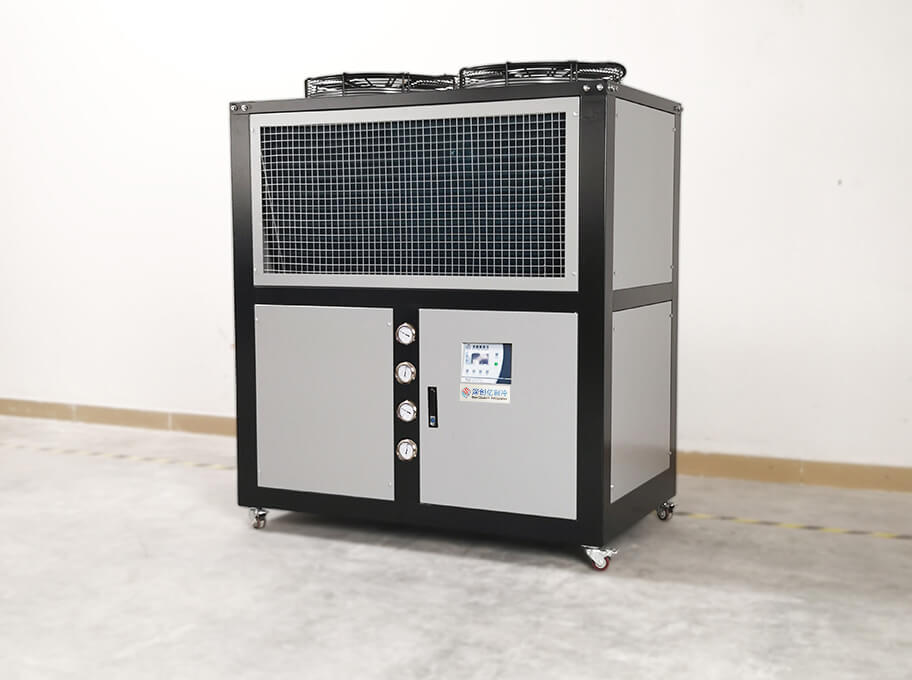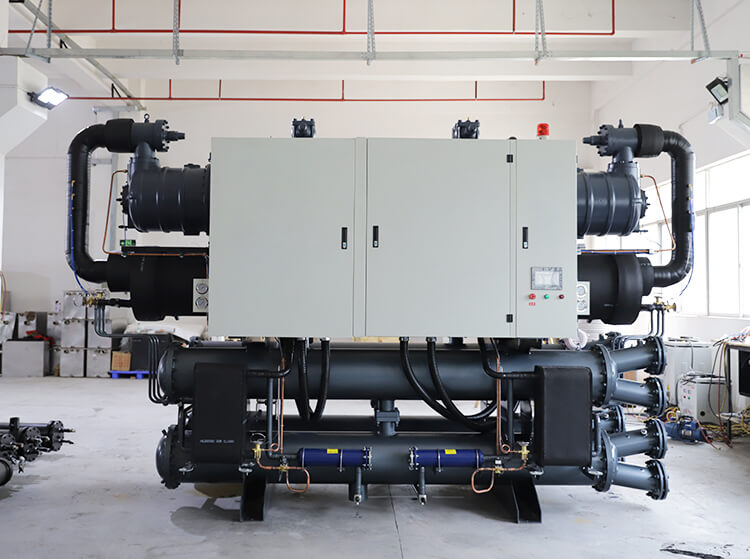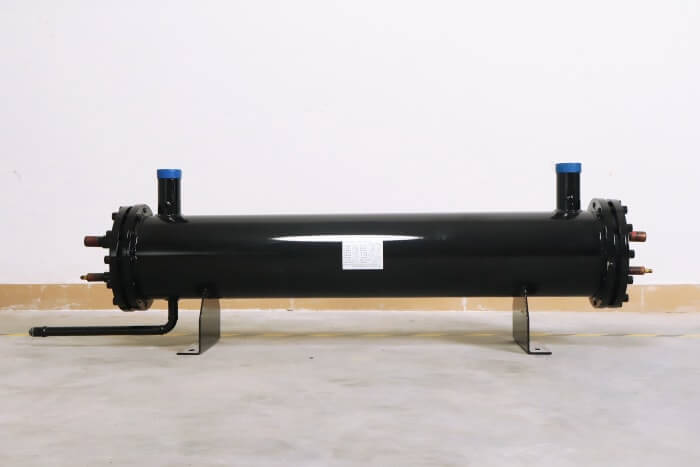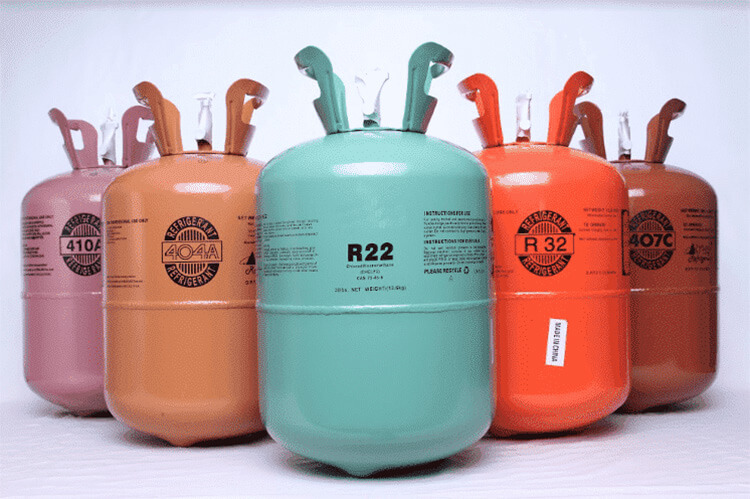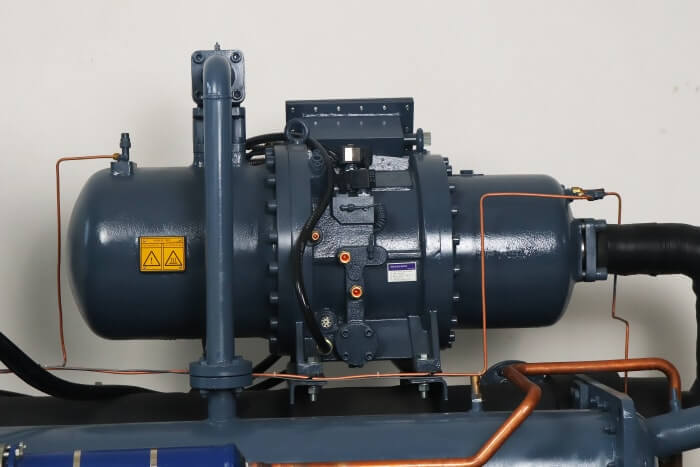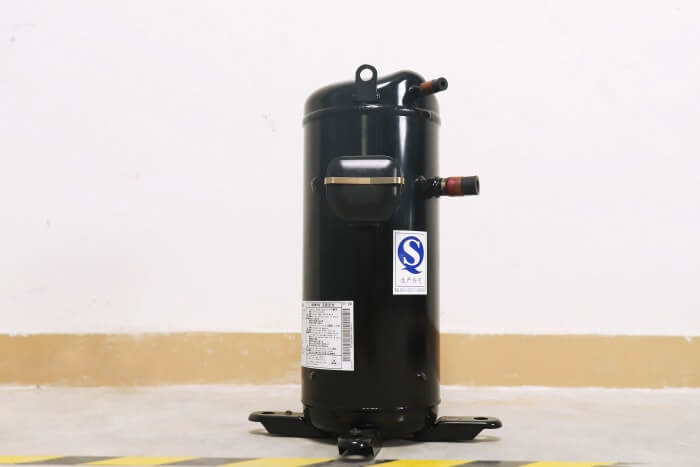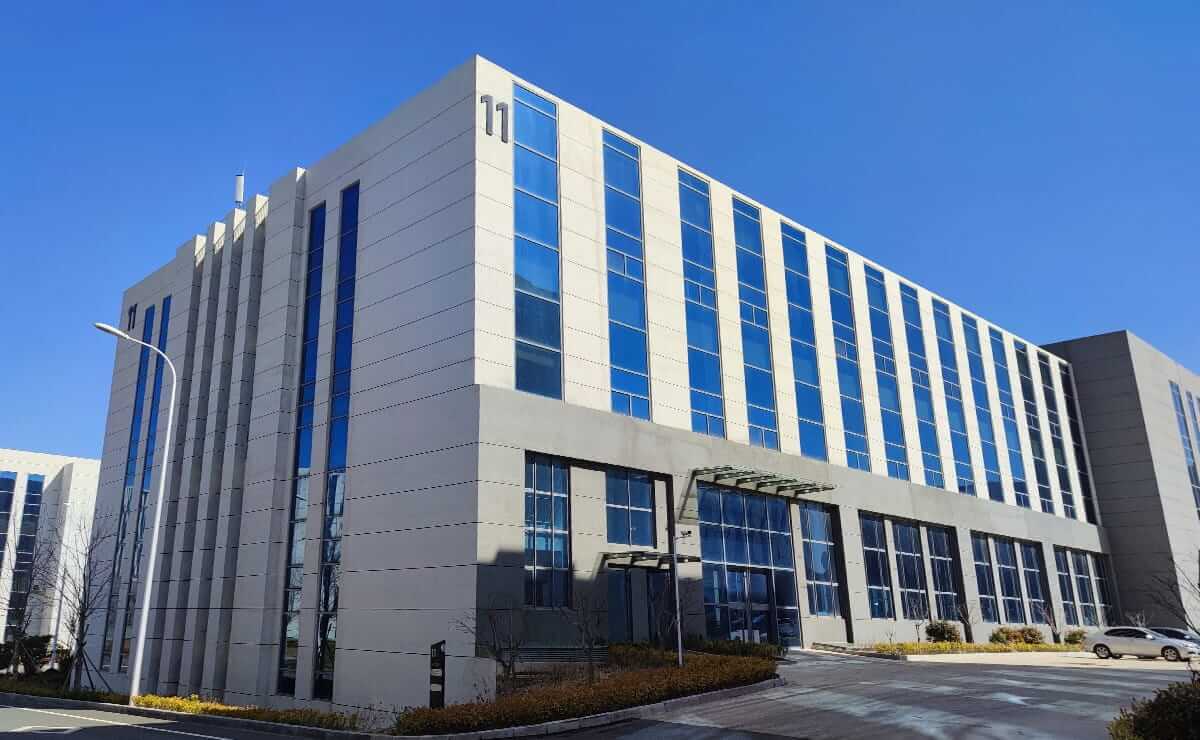Air cooled
Refers to a chiller system that uses the ambient air surrounding the condensing unit to cool and condense the refrigerant back into a liquid.
Water Cooled
Water cooled chillers absorb heat from process water and transfer it to a separate water source such as a cooling tower, river, pond, etc. They are generally used for large capacity applications, where the heat generated by an air cooled water chiller creates a problem. They are also considered when a cooling tower is already in place, or where the customer requires optimum efficiency of power consumption. Water cooled chillers require condenser water treatment to eliminate mineral buildup. Mineral deposits create poor heat transfer situations that reduce the efficiency of the unit.
Capacity
This refers to how much cooling the chiller is designed to provide at maximum load. The capacity can be controlled in most chillers so that it closely matches the actual cooling demand at the current time. The capacity is usually stated in units of kW or TR tons of refrigeration.
Evaporator
The evaporator is where the unwanted heat of the building is collected before being transferred over to the condenser. As the unwanted heat enters the evaporator it will cause the refrigerant to boil and evaporate, as it evaporates it will carry the heat away to the condenser. The refrigerant enters the evaporator as a low-pressure liquid and as it evaporates it leaves as a low pressure vapour.
Cooling Tower
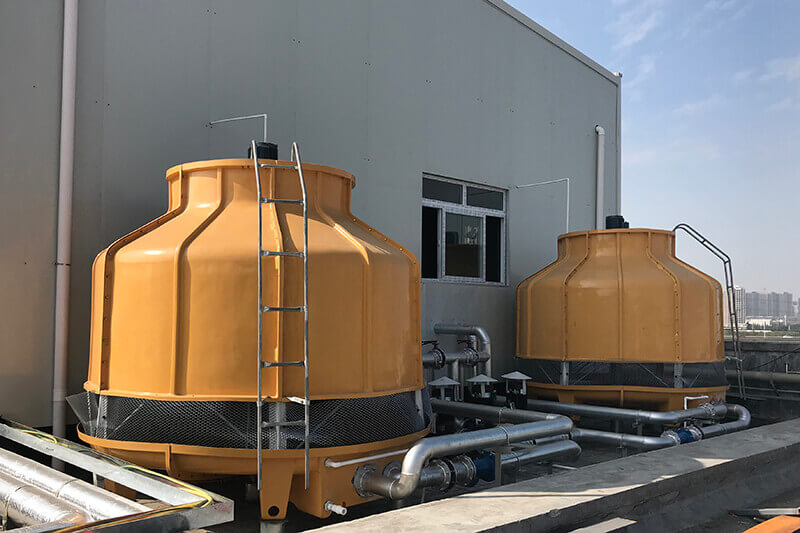
A cooling tower is a large heat exchanger unit that provides cooling water to remove heat from a coolant in your chiller. When the cooling water meets the air, a small portion evaporates, lowering its temperature. This is known as “evaporative cooling”.
Refrigerant
A refrigerant is any substance used to cool the water in a chiller through a heat exchanger or evaporator. The substance typically has a low boiling temperature and includes Freon and ammonia.
Compressor
A compressor in a refrigeration circuit compresses cool low pressure refrigerant gas to hot high pressure refrigerant gas that is then condensed back into a liquid to be used again.
Chilled water
The chiller generates chilled water, this water flows in a closed circuit between the chillers evaporator and the cooling coils within the building. A pump forces the chilled water around the building to the coils within the AHU’s and FCU’s where the unwanted heat in the air will transfer into the water, this cools the air down and warms the “chilled water” up, this warm chilled water then returns to the chiller evaporator to dump this unwanted heat. As the heat is dumped it causes the refrigerant boil and carry’s this heat away which causes the water to cool down again. It then repeats the cycle and collects more heat. Typical temperatures of the chilled water are flow: 6°C (42.8°F) Return: 12°C (53.6°F) These numbers can and will vary from this.
Condenser(Cooling) water
Condenser water is the water that flows between the cooling tower and the condenser of the water-cooled chiller. This picks up all the unwanted heat in the condenser which was transferred over via the refrigerant. It also collects the heat from the compressor in certain designs. The condenser water is sent to the cooling tower where the heat is removed and rejected to atmosphere and it then returns back to the condenser to pick up more heat. A typical temperature would be: Flow: 32°C (89.6°F) Return 27°C (80.6°F) these numbers are typical, they can and vary from this.


